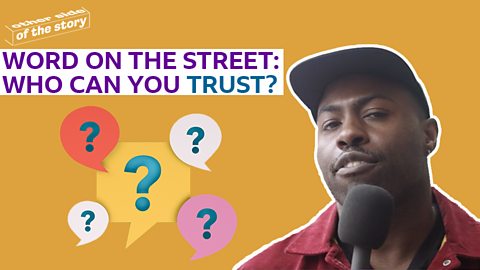Social media plays an increasingly big role in how we consume information. Research from Ofcom’s 2023 news consumption report, shows that 12-15-year-olds get their news from TikTok (28%), YouTube (25%) and Instagram (25%). But the news we consume can also influence our views and ideas about certain issues, so how can you tell if the people you’re relying on are being biased or balanced?
What does bias mean?
Bias is when a story is only presented from one viewpoint without considering the other side of the story. A balanced story would include various viewpoints and angles, offering the complete picture so you can make your own judgements.
What is positive bias?
Sometimes you might find a story online that is positively biased, like the video below.
Credit: @build_in_public on TikTok
People these days seem to only talk about the scariest use cases of AI, but I think it's worth talking about the positives as well. So here's three use cases where AI is giving us a brighter future.
One, healthcare. AI is used to predict diseases, aid and diagnoses, and personalise treatment plans.
Two, education. AI-powered systems can adapt to individual learning styles, provide personalised learning materials, and automate administrative tasks, giving teachers more time to teach.
And three, social good. AI is predicting areas that require disaster relief, helping to find missing people and aiding in the fight against human trafficking.
And AI's positive potential is vast and still largely unexplored.
This TikTok only focuses on the positive things about AI and doesn't mention any of the downsides. So, if this was your only source of information on AI, your overall perspective on the topic may be skewed.
The creator might want you to believe that AI is amazing and flawless. But they omit what experts and scientists are saying – which is that AI could result in job losses and is being used, by some, to spread false information.
Also, the person who made the video made a lot of claims but didn't back them up with what experts or trusted sources are saying.
What is negative bias?
Likewise, there are reports that show a negative bias. In these cases, someone might try to cause unnecessary worry by only talking about or showing the negative aspects of a story, just like the video below.
Credit: @newswithchrisofficial on TikTok
Head teachers in the UK have written a letter to The Times this week saying how bewildered they are of how fast AI technology isgrowing.
School leaders do not trust tech companies to protect students and schools, so they're launching their own group to help give the right advice to schools on the dangers of AI. School leaders are not just concerned about chat bots helping students cheat, but the risk to children's mental health and their own jobs.
Head teachers are asking for real guidance and advice on AI, but here's the catch - they don't know who to trust for advice. They don't think that big tech companies can regulate AI to protect students and schools and they don't think the government can do it either.
Similar to the video that leaned towards a positive bias about AI, this one also only presents a single perspective, and includes statements without offering supporting evidence.
Whether it's a positive or negative bias, reports like these often miss out important details, which makes them unreliable. So, when you see videos like this online, it's a good idea to look for other perspectives before you come to any sort of conclusion.
What is unconscious bias?
Sometimes we can form opinions on a person or subject without even realising. Unconscious bias is a theory that say we all have deep rooted thoughts and feelings about people, places and things. We’re not always aware of them but they can change the way we view things.
How to be impartial
A balanced news report doesn't try to make you believe one specific thing or nudge you in a particular direction. Instead, it shows all angles of the stories, talks about both the good and the bad aspects, and allows you to make an informed decision.
Is the BBC biased?
The BBC has a commitment to being impartial, which is another word for balanced. The BBC TikTok below is an example of a balanced, or impartial, news report on AI.
Credit: @bbcnews on TikTok
Okay, bad news. Artificial intelligence could lead to the extinction of humanity - that's what a group of experts, including the heads of Google DeepMind and OpenAI, which makes ChatGPT, have warned.
They signed a statement published online that said: "Mitigating the risk of extinction from AI should be a global priority alongside other societal-scale risks such as pandemics and nuclear war." Which is quite apocalypse vibes!
But not everyone agrees with the statement. A lot of other AI experts say the fears are overblown. They think AI wiping out humanity is unrealistic and distracts from other issues with the technology.
And this isn't the first time that key figures in artificial intelligence have come together to raise concerns about the future of AI. In March this year, experts, including Elon Musk, said the race to develop AI was out of control, and called for training of AI systems to be suspended.
In this TikTok, they're really clear about where the information came from. They quote experts who know a lot about AI, such as the heads of Google DeepMind and OpenAI.
The reporter talks about both sides of the story: some experts worry that AI could be so bad that it's a danger to humanity, while others don't agree and think those worries aren't likely to happen.
So, the next time you come across an online news report, think about whether it's showing things in a positive or negative way. Check where the information in the report came from, and question whether it’s biased, or whether it’s balanced, allowing you to decide for yourself.


